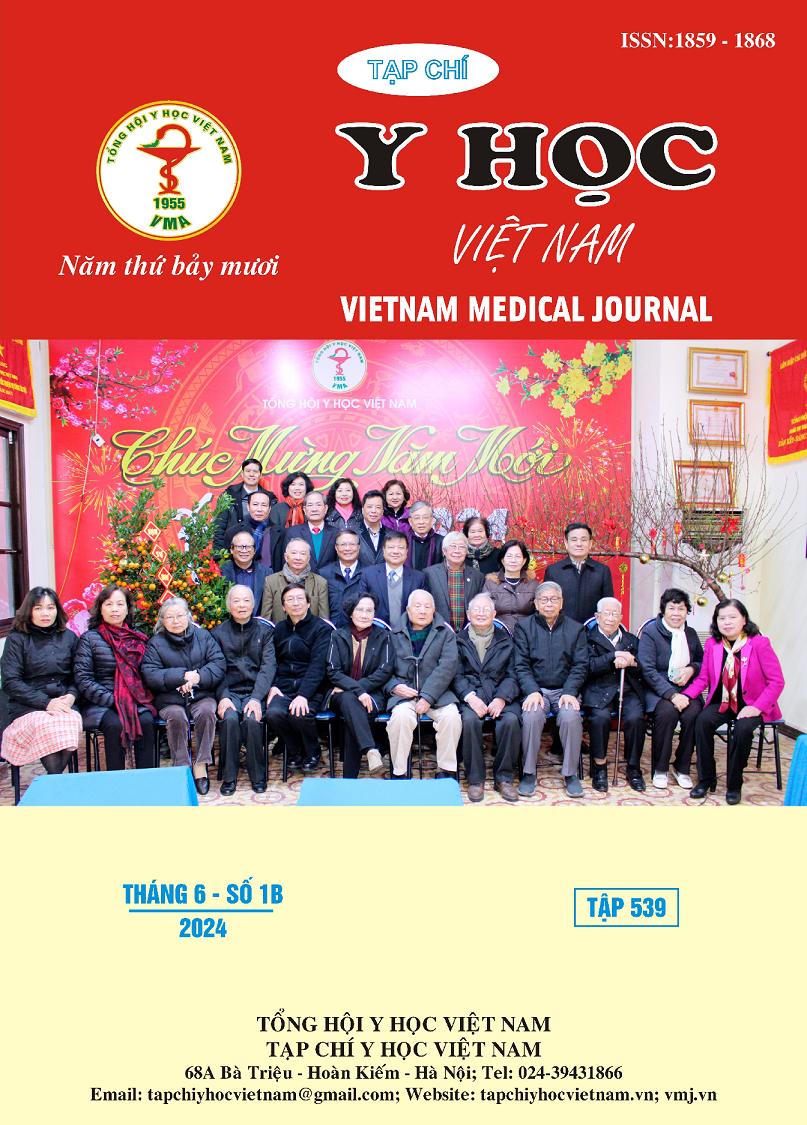EARLY VERSUS LATE TREATMENT WINDOWS FOR BASILAR ARTERY OCCLUSION
Main Article Content
Abstract
Objective: Acute ischemic stroke caused by basilar artery occlusion (BAO) has devastating effects on patients. The time from stroke onset to recanalization is a predictor of outcomes in patients of anterior circulation large-vessel occlusion (LVO). The study aimed to evaluate functional outcomes in early (0 - 6 hours) vs late (6 - 24 hours) time windows for recanalization treated basilar artery occlusions. Method: A prospective study was conducted at 115 People’s Hospital, Ho Chi Minh city from August 2021 to June 2023. Patients with acute BAO who underwent recanalization therapy within 24 hours from symptom onset were included. The baseline characteristics and outcomes were analyzed and compared between patients treated in early and late window. Good functional outcome was defined as mRS ≤ 3 at 90 days. Result: 210 BAO patients (with an average age of 64.8 ± 12.8, comprising 30% females) received treatment within 24 hours of symptom onset. Among them, 57 patients received treatment within the early window (0 - 6 hours) while 153 were treated within the late window (6 – 12 hours). A total of 28 (49.1) and 67 (43.8%) patients in the early and late time windows, respectively, achieved good functional outcomes at 90 days (p = 0.49). No significant differences were observed between the two groups in terms of favorable outcomes (33.3% vs 34.6%, p = 0.86) or mortality rates (40.4% vs 47.7%, p = 0.34). Symptomatic intracranial hemorraghe was observed in 2 patients (3.5%) in the early window compared to 11 patients (7.2%) in the late window (p = 0.33). Conclusion: Recanalize treatment was effective and safe for treating patients with acute BAO in 24 hours. The early and late thrombectomy time windows can achieve similar
Article Details
Keywords
basilar artery occlusion, ischemic stroke, recanalization treatment
References
2. Nogueira RG, Jadhav AP, Haussen DC, et al. Thrombectomy 6 to 24 hours after stroke with a mismatch between deficit and infarct. New England Journal of Medicine. 2018;378(1):11-21.
3. Albers GW, Marks MP, Kemp S, et al. Thrombectomy for stroke at 6 to 16 hours with selection by perfusion imaging. New England Journal of Medicine. 2018;378(8):708-718.
4. Tao C, Nogueira RG, Zhu Y, et al. Trial of endovascular treatment of acute basilar-artery occlusion. New England Journal of Medicine. 2022;387(15):1361-1372.
5. Jovin TG, Li C, Wu L, et al. Trial of thrombectomy 6 to 24 hours after stroke due to basilar-artery occlusion. New England Journal of Medicine. 2022;387(15):1373-1384.
6. Hacke W, Kaste M, Bluhmki E, et al. Thrombolysis with alteplase 3 to 4.5 hours after acute ischemic stroke. New England journal of medicine. 2008;359(13):1317-1329.
7. Lê Thị Hạnh Nguyên, Phan Hà Quân, Mai Duy Tôn. Kết quả điều trị bệnh nhân nhồi máu não do tắc động mạch thân nền không tái tưới máu. Tạp chí Nghiên cứu Y học. 2023;169(8):53 - 61.
8. Dornak T, Herzig R, Sanak D, Skoloudik D. Management of acute basilar artery occlusion: Should any treatment strategy prevail? Biomed Pap Med Fac Univ Palacky Olomouc Czech Repub. 2014;158(4):528-34.


